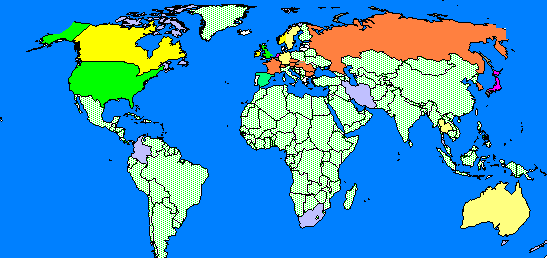|
What are the latest developments concerning the death penalty?
In June 2008, the Supreme Court held that it was cruel and unusual punishment to use the death penalty against individuals convicted of raping a minor. In April 2008, the Supreme Court has held that lethal-injection procedures in Kentucky do not violate the Eighth Amendment's prohibition against cruel and unusual punishment. The action opens the way for an end to a de facto national moratorium on lethal injection executions that has been in place since the Supreme Court agreed to consider the issue. Many medical experts believe the method to be inhumane. In California, an execution was halted when physicians refused to participate because of such considerations. As of 2015, the number of executions in the U.S. has significantly diminished based on concerns about the legality and availability of the lethal injection method of execution.
The number of Americans supporting the death penalty has begun to decrease, although over 60% still support it.  As China has become a more visible international power, its excessive use of the death penalty
has come under increasing international scrutiny. As China has become a more visible international power, its excessive use of the death penalty
has come under increasing international scrutiny.
When did countries begin to abolish the death penalty?
Capital punishment was widely applied in ancient times throughout the world. The modern movement for the abolition of capital punishment began in
the 18th century with the writings of Montesquieu and Voltaire. Some of the first countries to abolish capital punishment included Venezuela (1863), San
Marino (1865), and Costa Rica (1877). Today, over half the countries in the world have abolished the death penalty either by law or through practice.
 (Click to see map) Since 2000, Chile, Yugoslavia, Serbia, Montenegro and Turkey have joined the list of abolitionist countries. Most executions occur in a
handful of countries: China, Iran, Saudi Arabia and the United States. In Great Britain, it was abolished (except for cases of treason) in 1971; France
abolished it in 1981. Canada abolished it in 1976. In 1977, the United Nations General Assembly affirmed in a formal resolution that throughout the world,
it is desirable to "progressively restrict the number of offenses for which the death penalty might be imposed, with a view to the desirability of abolishing
this punishment". (Click to see map) Since 2000, Chile, Yugoslavia, Serbia, Montenegro and Turkey have joined the list of abolitionist countries. Most executions occur in a
handful of countries: China, Iran, Saudi Arabia and the United States. In Great Britain, it was abolished (except for cases of treason) in 1971; France
abolished it in 1981. Canada abolished it in 1976. In 1977, the United Nations General Assembly affirmed in a formal resolution that throughout the world,
it is desirable to "progressively restrict the number of offenses for which the death penalty might be imposed, with a view to the desirability of abolishing
this punishment".
What has been the recent history of capital punishment in the United States?
The U.S. Supreme Court in 1972 struck down state death penalty laws, a ruling that also brought federal executions to a halt. In 1976, the court
reinstated the death penalty after the adoption of new procedures. From 1982 to 1999, 250 to 350 persons were annually sentenced to death but recently the number of death sentences has dropped dramatically.  (Click to see chart) The number of executions gradually increased as appeals
become exhausted. In 1999, the number reached 100 but it has dropped since and most recently there have been no executions due to new constiutional challenges. (Click to see chart) The number of executions gradually increased as appeals
become exhausted. In 1999, the number reached 100 but it has dropped since and most recently there have been no executions due to new constiutional challenges.  Among the 50 states, the death penalty is abolished in 16 states and several others have not carried out any recent executions. Among the 50 states, the death penalty is abolished in 16 states and several others have not carried out any recent executions.
 Five states have carried out over 2/3 of the executions
since 1977. Five states have carried out over 2/3 of the executions
since 1977.  In most states the method of execution is by lethal injection although in several states the prisoner may choose an
alternative method. In most states the method of execution is by lethal injection although in several states the prisoner may choose an
alternative method.
Why has the death penalty again become controversial in the United States?
The major reason is that modern forensic techniques have many prisoners, including several who had been on death row.
In January 2000, Governor George Ryan of Illinois imposed a moratorium on the imposition of the death penalty in Illinois. In reviewing death penalty
cases since 1977, he determined that 13 death row inmates in the state had been cleared of murder charges, compared to 12 who had been put to death. Some of
the 13 inmates were taken off death row after DNA evidence exonerated them; the cases of others collapsed after new trials were ordered by appellate courts.
"There is a flaw in the system, without question, and it needs to be studied", Ryan said. Ironically, the Republican Governor had campaigned in support of
the death penalty. Ultimately in January 2003, Governor Ryan commuted all death sentences to prison terms of life or less.
the high profile nature of the case.
Proponents of the death penalty argue that it deters criminals. Because so many variables are involved, this is a difficult contention to objectively
evaluate. It is relatively safe to conclude that the overall serious crime rate is influenced by many other factors. Proponents also argue that the death
penalty provides emotional compensation to the families of crime victims.
Most death penalty critics have an ethical basis for their opposition. They argue that a government's act to execute is a violation of human rights,
especially if there remains a possibility that the individual is innocent. The development of DNA testing has exonerated a number of convicted criminals,
include some on death row. They also charge that the penalty is particularly barbaric when applied to mentally retarded persons and juveniles.
Death penalty critics argue that the high reversal rate in death penalty cases illustrates the fallibility of the criminal justice process. A full 65%
of convictions in capital cases are overturned according to one study. Yet there does not appear to be significant progress on many proposals for modifying
criminal procedure in capital cases such assigning special judges and guaranteeing adequately trained counsel. Nor are there proposals which might impose a
higher standard of proof in death cases for the purpose of reducing the risk of executing
innocent persons.
Because of the intense scrutiny and numerous appeals applied to death penalty cases, a growing number of legal professionals have begun to oppose the
death penalty for economic reasons, arguing that the costs of trial and appeals for a capital case are greater than would be the case if the death penalty
were not sought. In addition, the average amount of time between the date of conviction and the date of execution is 10 years. Death penalty proponents
maintain that life imprisonment without possibility of parole is still less expensive and there does not yet appear to be an academic study that has
thoroughly evaluated this issue.
Finally, many death penalty opponents are concerned that the United States is out of step with other industrialized countries in its practice of the death
penalty. The only other OECD country which permits the death penalty is Japan, and executions there are infrequent. On the other hand, Time magazine has
reported that public opinion polls in Europe show significant support for the death penalty; in some countries it is even favored by a majority.
Does the death penalty apply to the mentally retarded?
In June 2002, the Supreme Court reversed a ruling it had made 13 years earlier and held in a 6-3 decision that such punishment does constitute "cruel and unusual punishment" to
this group. The court relied in part on the degree to which public opinion now characterized the punishment as excessive. A number of states had already
passed legislation prohibiting such executions.  As many as 10% of death row inmates suffer from mental retardation.
As many as 10% of death row inmates suffer from mental retardation.
Are there racial differences in the application of the death penalty
As to perpetrators, any discrimination would be equivalent to the overall discrimination in the criminal justice system. Blacks no longer outnumber
whites on death row and the rate of their death penalty sentences is roughly equivalent to their high percentage of the prison population.
 But as to victims, there is a discriminatory pattern.
Studies have indicated that homicides involving white victims are far more likely to be prosecuted as death penalty cases. But as to victims, there is a discriminatory pattern.
Studies have indicated that homicides involving white victims are far more likely to be prosecuted as death penalty cases.

Are minors subject to the death penalty?
On March 1, 2005, the U.S. Supreme Court abolished the death penalty for minors. Prior to this ruling, minors were subject to the death penalty in a
majority of states where the death penalty is practiced. 
Death Penalty Links
Open Directory - Death Penalty
Wikipedia - Capital Punishment
Wikipedia - Capital Punishment in the United States
Death Penalty Information Center - provides state-by-state
information on executions, a history of the death penalty; looks at issues such as mental retardation, race, innocence, deterrence, and botched execution;
has a series of in-depth reports.
|

